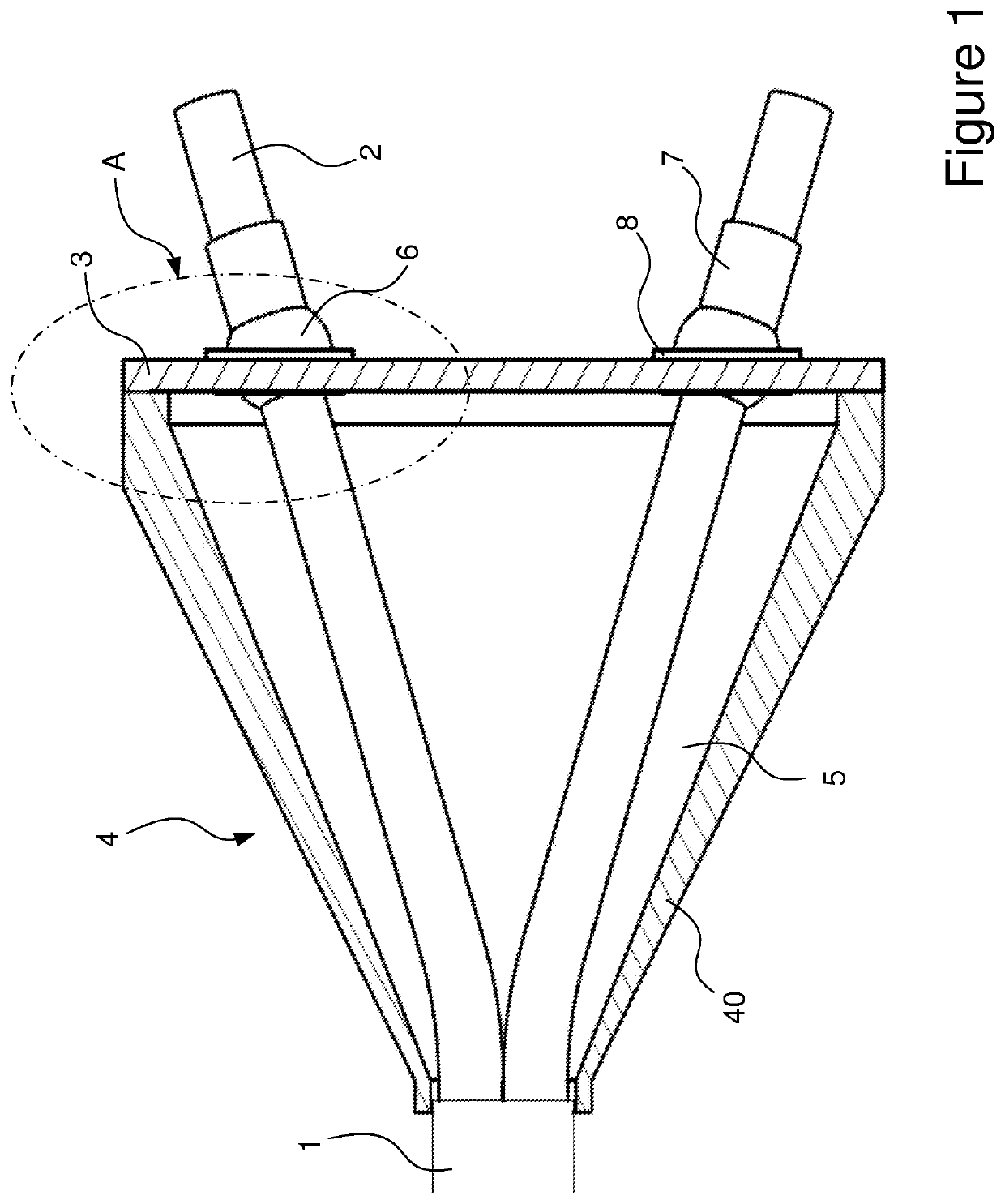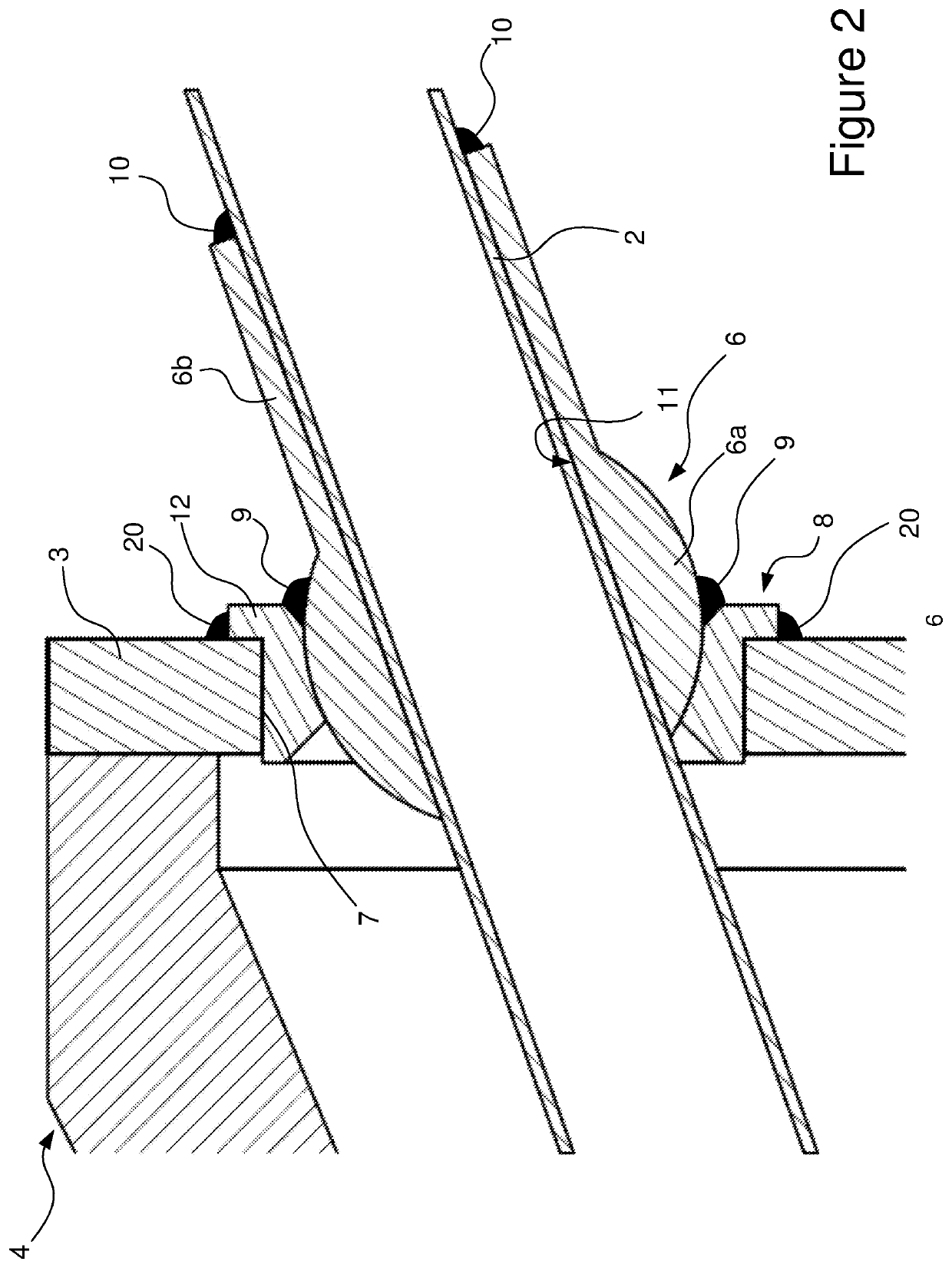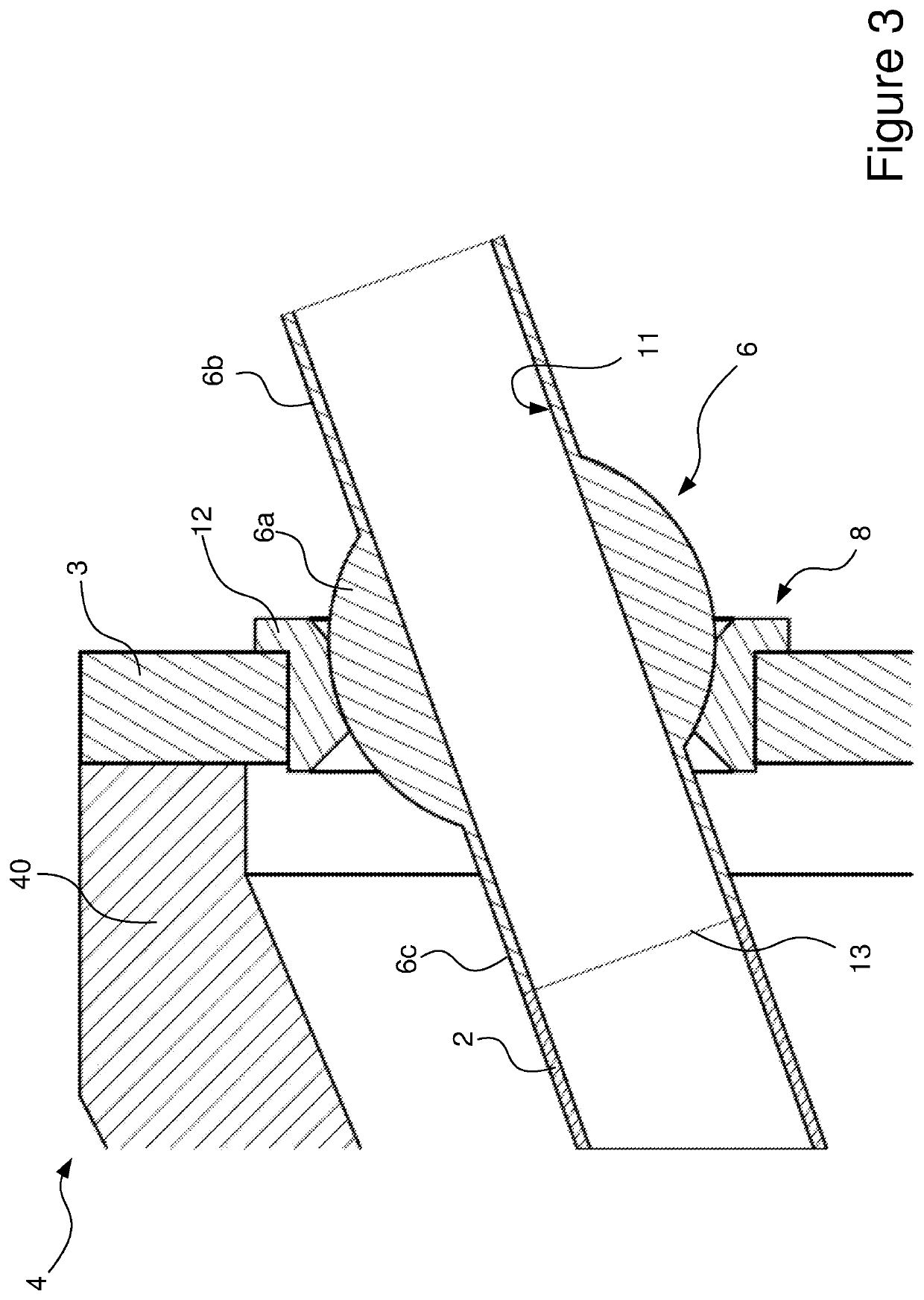Termination assembly
a technology of assembly and umbilical, which is applied in the direction of mechanical equipment, transportation and packaging, brake systems, etc., can solve the problems of difficult connection of the umbilical at each end, particularly the load of the umbilical handling, and the difficulty of manoeuvring the umbilical into position, so as to reduce the cost, reduce the degree of flexibility, and facilitate the transfer of loads
- Summary
- Abstract
- Description
- Claims
- Application Information
AI Technical Summary
Benefits of technology
Problems solved by technology
Method used
Image
Examples
Embodiment Construction
[0033]FIG. 1, shows an embodiment of a termination assembly 4 for an umbilical 1, according to the invention. In this embodiment, the umbilical termination 4 comprises a plurality of umbilical elements, although only two steel tubes 2 are shown in the figure. The tubes 2 extend from umbilical 1, through the termination cavity 5 of the termination assembly 4 and pass through respective holes in a steel bulkhead plate 3. Additional umbilical elements would also pass through the bulkhead plate 3. The bulkhead plate 3 is affixed to the termination assembly 4, to form the termination cavity 5. In the arrangement shown, the conical can portion 40 which forms the body of the termination assembly 4 may be formed in multiple parts which can be joined together.
[0034]It can be seen from FIG. 1 that the steel tubes 2 are bent through a relatively small angle close to the end of the umbilical 1 but are otherwise relatively straight. As such, minimal mechanical working of the tubes is required to...
PUM
 Login to View More
Login to View More Abstract
Description
Claims
Application Information
 Login to View More
Login to View More - R&D
- Intellectual Property
- Life Sciences
- Materials
- Tech Scout
- Unparalleled Data Quality
- Higher Quality Content
- 60% Fewer Hallucinations
Browse by: Latest US Patents, China's latest patents, Technical Efficacy Thesaurus, Application Domain, Technology Topic, Popular Technical Reports.
© 2025 PatSnap. All rights reserved.Legal|Privacy policy|Modern Slavery Act Transparency Statement|Sitemap|About US| Contact US: help@patsnap.com



